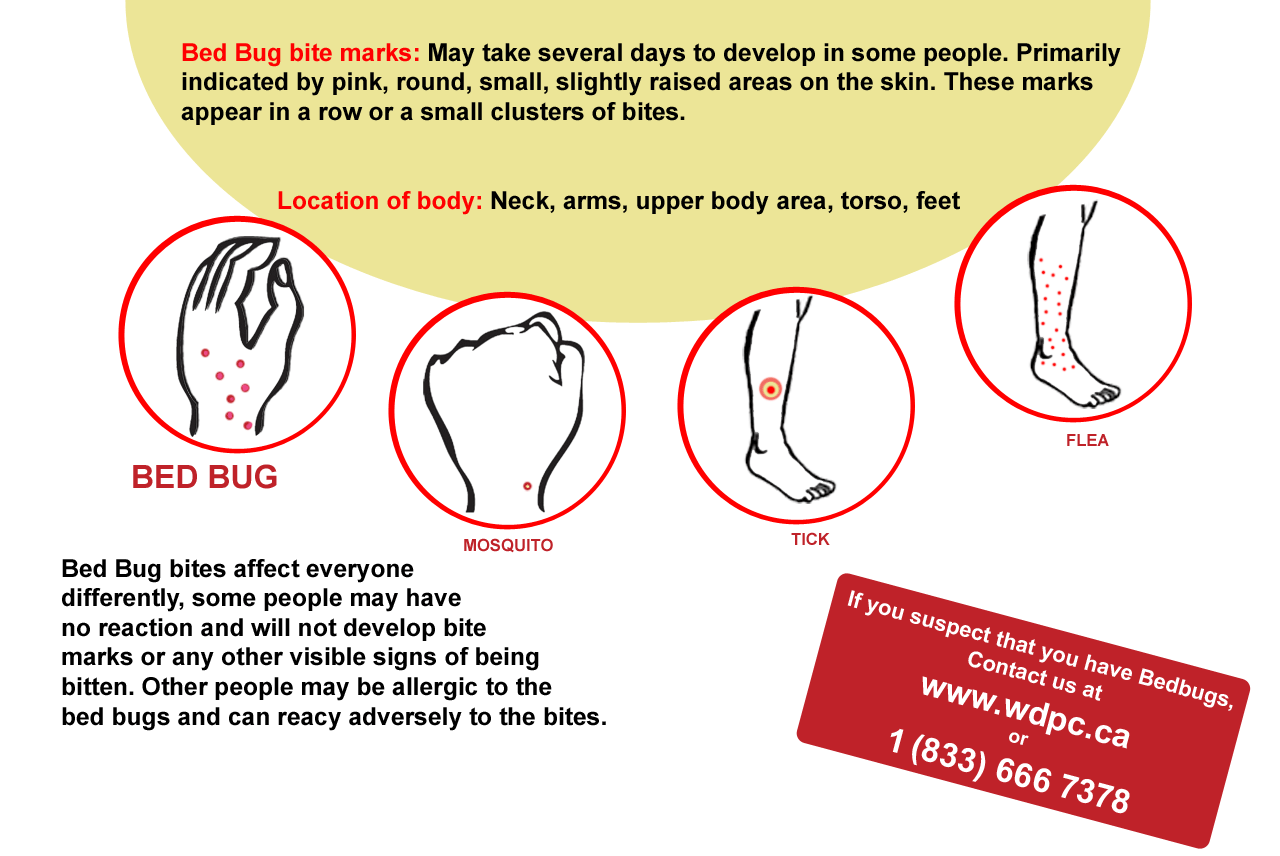BED BUGS
ACTIVE MONTHS
January
February
March
April
May
June
July
August
September
October
November
December

Bed bugs are small, reddish-brown, oval-shaped, parasitic insects. They are wingless and measure between 4 to 5 mm. Sometimes bedbugs are too small to see with naked eyes. The nymphs are small and difficult to see but the adults are detectable with naked eyes.
DIET & HABITAT
Bed bugs only feed on blood. They can drink blood from birds and mammals, but they like human victims best. They are most active between 00:00-05:00 AM when hungry and humans offer these voracious insects an all-night buffet and fantastic places to hide when they’re not feasting. They probe human skin (several times) while searching for a capillary to feed on. After feeding hides cracks and crevices with other bed bugs.
Bed bugs are found in cracks and crevices, including mattress seams, sheets, furniture, behind baseboards, electrical outlet plates and picture frames. Often found in hotels, where they can travel from room to room and in visitors’ luggage or other personal belongings such as purses and briefcases.
Case skins: As the bugs grow, they shed their skin and discovery of which can indicate their presence.
Black Spots: After feeding, bed bugs return to their harborage to hide where they defecate black to brown stains.
Bites also may indicate bed bug activities
REPRODUCTION
Mating between bed bugs occurs after feeding on blood, males particularly voracious.
Female bugs are able to lay eggs for 1 day after mating and lay 30-70 eggs over the course of 10 days after feeding. Under optimal conditions, bedbugs populations can double in 16 days. Hatch rate increases with temperature increase.
LIFE CYCLE OF A BED BUG
7 life stages including 5 nymph molts. Each life stage of bedbugs requires a blood meal to molt to next stage (except egg to nymph). If they find no host, bed bugs will not develop to next stage.

WHY DO BED BUGS BITE?
Bed bugs are blood feeders that depend on blood for their food source, so they must consume blood for survival.
One bed bug will usually take more than one bite. Once a bed bug inserts its mouthparts and finds a suitable blood vessel, it will begin feeding. However, finding the right blood vessel may take more than one injection of the skin. In addition, bed bugs are very sensitive to movement by the host they are feeding on. Therefore, if a sleeping person moves, a feeding bed bug will probably withdraw its mouthparts and begin its search for a blood meal on another part of the body.
It’s important to remember that the number of bites a person receives is not indicative of the number of bed bugs that feed on that person.
HOW TO IDENTIFY BEDBUGS BITE ON YOU?

HOW TO IDENTIFY BEDBUGS ON PETS?
Bites on dogs and cats will look much like bites on people, and the pet owner may actually suspect a mosquito or flea bit the pet. As with people, bed bugs do not stay on pets, but return to a protected harborage site after feeding. In addition to bites, the presence of the bug’s feces, cast skins and the animal’s irritation at night are also indicators of bed bugs biting pets. Therefore, one of the best things to do is inspect the pet’s bedding and frequently groom the animal while being vigilant for the telltale signs of bed bug presence.
-
Bed bugs do not live on the pets but they might do so when they are unable to find a human victim.
-
Bed bug bites on cats or dogs can cause acute skin irritation, pink welts or spots on the skin, intense itching and even allergic dermatitis.
-
If your pet is losing a great deal of hair, and if it is not from ticks, fleas or usual shedding reasons, then there is a possibility you are having bed bugs in the home. Bed bug bites on dogs and cats have been known to cause patchy hair loss, rashes, hives, blisters and even irritability or anxiety in the pets.
-
Other than these signs, pet owners must also look for discarded exoskeletons of the bugs and their fecal stains. These are typically brown, red or rust colored spots and stains in and around the pet’s bedding.
-
If you are wondering how you got the bed bug infestation, then there is a strong possibility of them having hitchhiked their way into your home. Bed bugs are capable of traveling large distances through luggage, clothing etc. They can also travel on your pet’s fur or on its bedding.
-
Bed bugs, as mentioned above, do not live on the dog or cat’s fur. They prefer cooler regions to hide when they are not feeding.
If you see these signs of bed bug bites on dogs or cats, then it is important to take the matter seriously in order to prevent larger problems.
Book an appointment and talk with a pest control expert.
100 % pest removal guaranteed.


